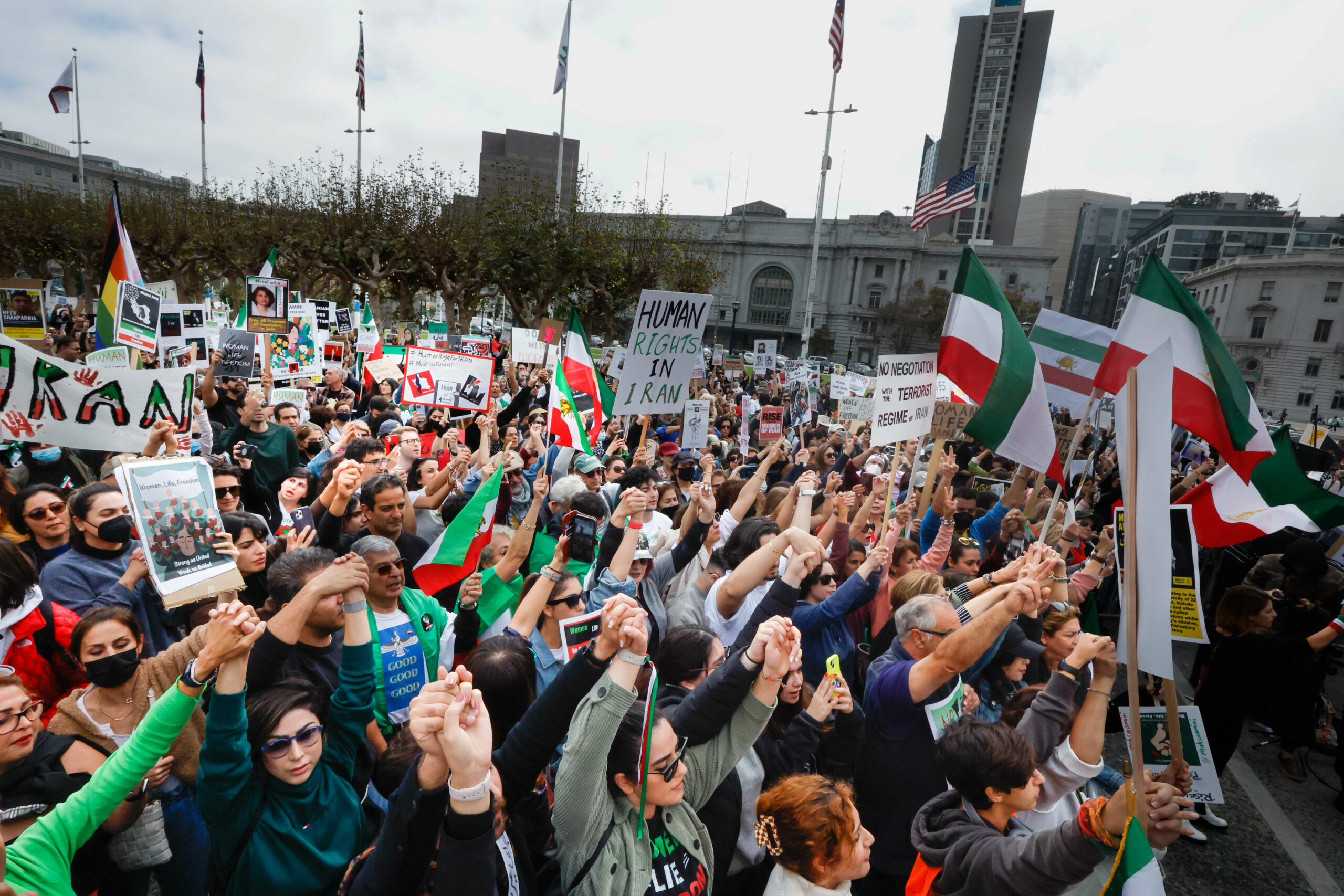Ever since ongoing protests erupted in Iran last month over the death of a Kurdish woman, the days have been riddled with anxiety for San Francisco resident Yasaman Hakami.
Protests around the world began on Sept. 16, when 22-year-old Jina Amini—better known by her Persian name Mahsa—died in custody after the country’s morality police arrested her for improperly wearing her hijab. While the exact death toll in Iran is unconfirmed, several dozen protesters, many in their teens and early 20s, were reportedly killed.
It’s been difficult to pay attention to much else, Hakami, 23, said. At the same time, the wave of hope that Iran could be at a pivotal moment for regime change is breaking through—and all across the diaspora’s fragmented political divide.
“The profoundness of this moment is felt so deeply among us in San Francisco,” said Hakami, who helped organize the latest protest in the city. “I think a lot of people gave up on Iran being anything but what it is right now. Everyone shares this fear that we can’t let this die.”
On Sunday, approximately 2,000 protesters gathered outside of San Francisco’s City Hall to keep the momentum going using the rallying cry “Women, Life, Freedom,” which originates from a Kurdish independence slogan. California is said to have the largest number of Iranians outside of Iran itself, with many in the Bay Area.
Supervisor Ahsha Safaí and Board of Education Commissioner Lainie Motamedi, who are both Iranian, were joined by fellow officials state Sen. Scott Wiener, City Attorney David Chiu and District Attorney Brooke Jenkins, in supporting the protests while calling for federal officials to take a stronger stand like Canada, which has barred thousands of members of Iran’s Islamic Revolutionary Guard Corps from crossing its borders. Representatives for U.S. Sens. Dianne Feinstein and Alex Padilla also gave speeches.
Protestors chanted “death to the Islamic Republic” in Persian and sang along to “Baraye,” a song written by Shervin Hajipour using tweets from Iranians about what they’re fighting for that has become the de facto protest anthem. They also chanted the names of teenage girls killed amid the protests, including Nika Shakarami, a 16-year-old who has become another figure fueling the protests.
Other protests include the huge chain of people formed at the Golden Gate Bridge late last month, a march to City Hall last Saturday as part of a global day of protests in support of Iranian freedom, and a gathering at Berkeley’s City Hall on Thursday.
San Francisco has shown other cues of support, like City Hall lighting up with the colors of the Iranian flag, Salesforce Tower honoring Iranian women and a cyclist “drawing” slogans of support in Persian across the city.
Maziar Behrooz, an associate history professor at San Francisco State University, said Iranians in the country seeing protests abroad boosts their morale to continue but that history has shown protests cannot survive repression—at least in the short term.
“The current situation is a manifestation of the inability to change the system and moderate it,” Behrooz said. “The system will defend itself with all it has, all its firepower as it’s doing now. In the long run […] Iran is full of surprises. It’s very difficult to predict.”
Parya Saberi, faculty at University of California San Francisco, has protested every weekend to continue motivating those she knows in Iran. Like others in the Iranian diaspora, Saberi has felt a lost sense of home by not being able to be in Iran but watching the latest political crisis from afar.
“There’s been a movement to press on,” Saberi said. “For me, there’s very little to lose. We have a voice and won’t be persecuted. Iran is in our heart.”
Correction: An earlier version of this story incorrectly stated that a representative for U.S. House Speaker Nancy Pelosi was in attendance.
